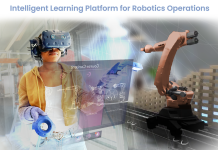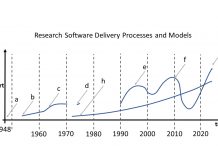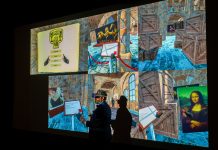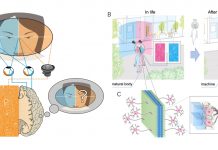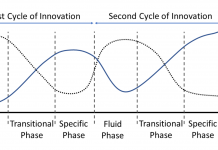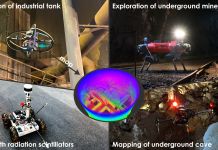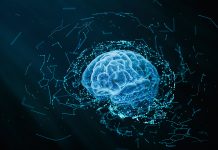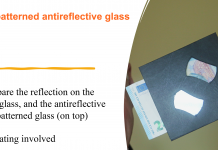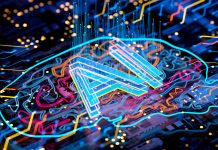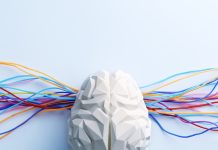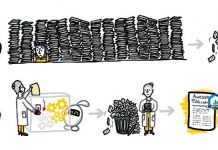Open Access Government produces compelling and informative news, publications, eBooks, and academic research articles for the public and private sector looking at health, diseases & conditions, workplace, research & innovation, digital transformation, government policy, environment, agriculture, energy, transport and more.
Home 2024
Archives
Harnessing AI for enhanced learning: Insights from the robotics academy
How technology is tailoring personalised learning experiences for the AEC sector.
Computing: Paradigm shifts, adoption, new digital professionals rising
Dr Joanna Leng, School of Computing, University of Leeds, UK and Dr Phillip Brooker, School of Sociology, University of Liverpool, Emeritus and Prof Wes Sharrock, School of Sociology, University of Manchester, focus on computing: paradigm shifts, charting the adoption and the rise of new digital professions.
Bridging realities: Dr. James Hutson on XR, GenAI, and gamification
The work of James Hutson, Lead XR Disruptor, Department Head at Lindenwood University, concerning bridging realities is placed under the spotlight
AI consciousness and neuroscientifically plausible “seamless” mind-uploading
Masataka Watanabe, Associate Professor at the University of Tokyo’s School of Engineering, examines a test for AI consciousness. He proposes it as part of a scientific approach to deciphering consciousness that leads to “seamless” mind uploading.
FFEA software: Repeated early innovation
Dr Joanna Leng, Senior Research Software Engineering Fellow at the University of Leeds, discusses software with repeated early innovation using the example of the FFEA software.
Exploring the role of machine learning in materials science and engineering
In this paper, Professor Dane Morgan and Research Scientist Ryan Jacobs, from the University of Wisconsin, Madison, discuss their adventures in the field of machine learning in the areas of materials science and engineering.
Fostering fundamental computational skills, a global challenge
Koji Watanabe, Professor from Miyazaki International University in Japan, argues that fostering fundamental computational skills is a global challenge.
Crafting investment models through contradictory value and momentum investment strategies by artificial intelligence
Professor Chien-Feng Huang discusses how Artificial Intelligence could provide innovative models and strategies to solve investment problems.
Quantum network technology
Prof Dr Stephanie Wehner, Director of the European Quantum Internet Alliance, explains how quantum network technology and a quantum internet could revolutionise communication and connectivity.
Supporting ICT employment opportunities for women in Egypt
Ragui Assaad and Irene Selwaness examine the increase of women in ICT jobs in Egypt, as well as gender disparities and the efforts to promote ICT employment growth.
The development of research software engineering as a profession
Dr Joanna Leng at the School of Computing explores Research Software Engineering (RSE) as an emerging profession, and how computing technology is core to many professions.
Employing robotics for inspection operations
Kostas Alexis of the Autonomous Robots Lab, Department of Engineering Cybernetics at the Norwegian University of Science and Technology, explores the use of autonomous robotics for inspection operations.
Neuronal networks of depression: Pushing the limits of brain stimulation technology
A team of researchers at the University of Freiburg and Delft University of Technology have joined forces to explore a new focused ultrasound technology to tap into the Neuronal Networks of Depression.
Nanotexured surfaces could be transformative – If given a chance to flourish
Professor Parvaneh Mokarian, founder of the technology and SUN-PILOT coordinator from Trinity College Dublin and AMBER centre looks at the possibilities and applications of nanotextured surfaces.
Human-centirc artificial intelligence: Frontier research and building industry capability
Chin-Teng Lin, Distinguished Professor from the University of Technology Sydney, Human-centric AI Centre, AAII, explores human-centric AI, focusing on frontier research & building industry capability.
Protecting submarine cables for enhanced connectivity
Morten Eriksrud, at ASN Norway AS, looks to the protection of the global network of submarine cables and other critical subsea infrastructure.
The SP theory of intelligence
Dr Gerry Wolff, the Director of CognitionResearch.org, looks at the SP theory of intelligence and the way we ‘store’ information in our brains.
Revolutionizing systematic reviews: the ASReview project’s call for trust and transparency in AI-aided screening...
Owing to the challenges inherent in the screening process, finding a low percentage of relevant studies at a high cost is common, making AI-aided screening tools a necessity.
Why is engineering design important for all leaners?
Engineering design systematically identifies needs, wants, and problems and then devises solutions to address them. A central component of our work is guiding students in the engineered design of solutions to local environmental problems.
Discussing early innovation software by example of the PERPL software
Dr Joanna Leng, School of Computing, University of Leeds, UK, presents a project from the fellowship, on the PERPL (pattern extraction from relative positions of localisations) software which analyses super-resolution light microscopy (SRLM) data.

